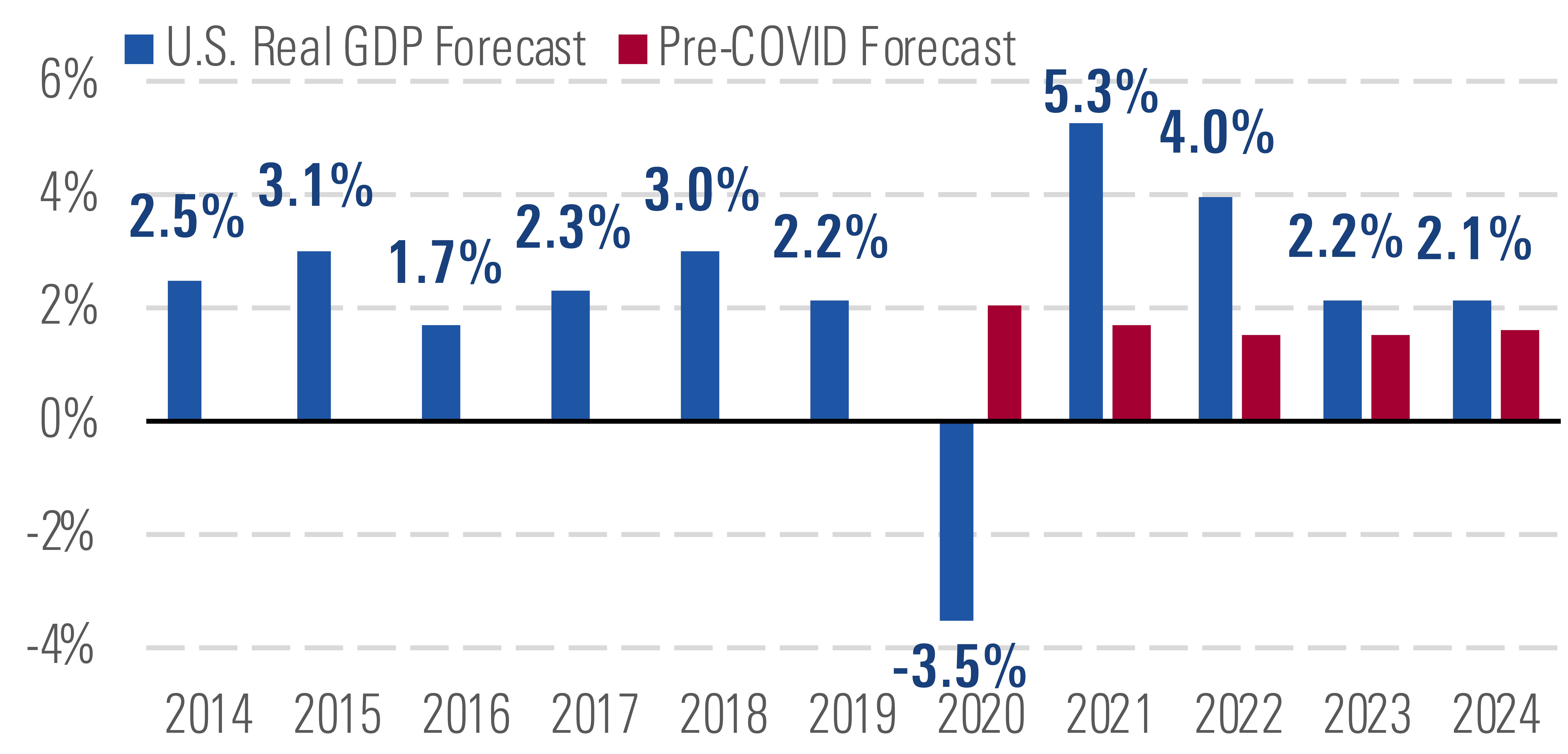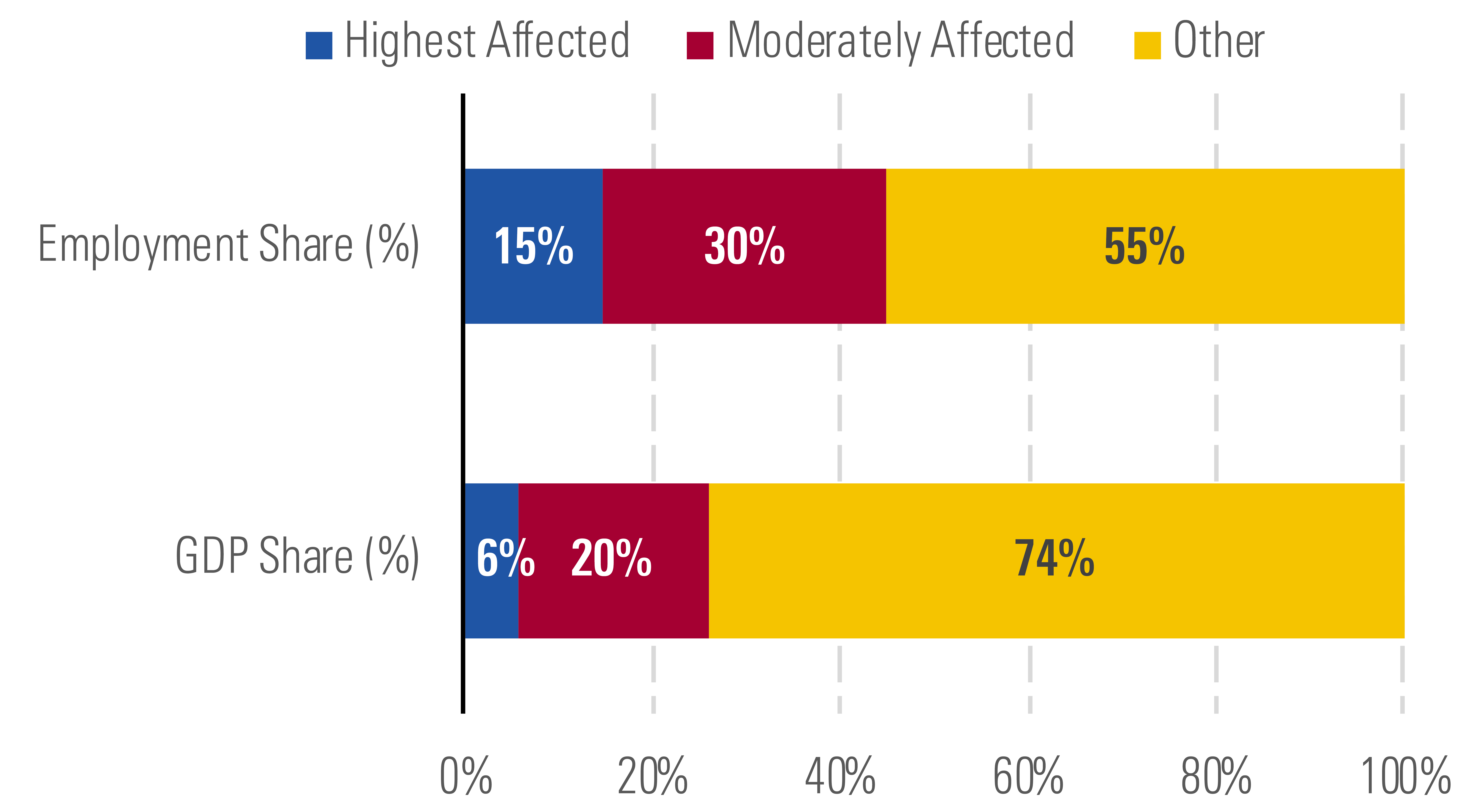Economic Outlook: U.S. Will Be Ready to Restart After Mass Vaccination
Consumers are ready to spend.
The U.S. economic recovery paused at the end of 2020, as a third wave of the coronavirus pandemic caused a retreat from the return to normal activity. However, the recovery is now restarting thanks to a receding of the pandemic plus massive fiscal stimulus. We're projecting U.S. real GDP growth of 5.3% in 2021 and 4% growth in 2022.

U.S. GDP fell sharply in 2020, but we expect rapid catch-up afterward - source: Morningstar
An end to the pandemic in the U.S. should be coming soon with the arrival of herd immunity in mid-2021 following mass vaccination. We expect the U.S. economy to take off like a rocket after that. U.S. consumers are eager to spend, as evinced by very strong goods spending.

Services consumption should rebound with mass vaccination - source: Morningstar
However, consumers' options are limited currently by the need to social distance. Normalization of behavior following mass vaccination will mean a snap-back of consumer services, driving an overall GDP recovery. The job market should recover in tandem with consumer services, as the sector accounts for most of the lost jobs during the recession. Households and firms alike are in good shape on average thanks to record stimulus in 2020, with the U.S. federal deficit reaching its highest level outside of World War II. And, another massive stimulus injection is coming via the March 2021 bill.

Highest-affected industries account for higher share of jobs than GDP - source: Morningstar
Altogether, there's little doubt now that the U.S. economy will not only recover from the pandemic but that it will test its limits in a way that hasn't been done since before the Great Recession. The key question then becomes where the upper limit is. We're now forecasting GDP to surpass our pre-COVID expectation. Yet we're not ready to match some of the more optimistic forecasts, as we think the U.S. economy will probably start brushing up against capacity constraints around 2022.
We've looked at several historical episodes in order to best understand the world after COVID-19. Our goal is to understand, in general, what happens when the economy is perturbed by an extreme but temporary external shock. Pandemics are one type of this class of events, but so also are wars, political upheaval, and related disruptions. For example, our analysis shows that United Kingdom rationing in World War II didn't depress long-run consumption of rationed goods via a change in habits. Instead, demand for rationed goods generally fully recovered.

WWII rationing had little long-term impact on U.K. food demand - source: Morningstar
Episodes like this suggest we should think carefully before proclaiming that any aspect of pandemic life will become a new normal. In areas such as e-commerce and remote work, we expect only a modest long-run impact on adoption trends due to the pandemic

/s3.amazonaws.com/arc-authors/morningstar/010b102c-b598-40b8-9642-c4f9552b403a.jpg)
/cloudfront-us-east-1.images.arcpublishing.com/morningstar/T5MECJUE65CADONYJ7GARN2A3E.jpeg)
/cloudfront-us-east-1.images.arcpublishing.com/morningstar/VUWQI723Q5E43P5QRTRHGLJ7TI.png)
/d10o6nnig0wrdw.cloudfront.net/04-22-2024/t_ffc6e675543a4913a5312be02f5c571a_name_file_960x540_1600_v4_.jpg)
:quality(80)/s3.amazonaws.com/arc-authors/morningstar/010b102c-b598-40b8-9642-c4f9552b403a.jpg)